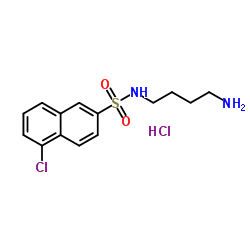Prevalence of bortezomib-resistant constitutive NF-kappaB activity in mantle cell lymphoma.
David T Yang, Ken H Young, Brad S Kahl, Stephanie Markovina, Shigeki Miyamoto
Index: Mol. Cancer 7 , 40, (2008)
Full Text: HTML
Abstract
The proteasome inhibitor bortezomib can inhibit activation of the transcription factor NF-kappaB, a mechanism implicated in its anti-neoplastic effects observed in mantle cell lymphoma (MCL). However, NF-kappaB can be activated through many distinct mechanisms, including proteasome independent pathways. While MCL cells have been shown to harbor constitutive NF-kappaB activity, what fraction of this activity in primary MCL samples is sensitive or resistant to inhibition by bortezomib remains unclear.Proteasome activity in the EBV-negative MCL cell lines Jeko-1 and Rec-1 is inhibited by greater than 80% after exposure to 20 nM bortezomib for 4 hours. This treatment decreased NF-kappaB activity in Jeko-1 cells, but failed to do so in Rec-1 cells when assessed by electrophoretic mobility shift assay (EMSA). Concurrently, Rec-1 cells were more resistant to the cytotoxic effects of bortezomib than Jeko-1 cells. Consistent with a proteasome inhibitor resistant pathway of activation described in mouse B-lymphoma cells (WEHI231) and a breast carcinoma cell line (MDA-MB-468), the bortezomib-resistant NF-kappaB activity in Rec-1 cells is inhibited by calcium chelators, calmodulin inhibitors, and perillyl alcohol, a monoterpene capable of blocking L-type calcium channels. Importantly, the combination of perillyl alcohol and bortezomib is synergistic in eliciting Rec-1 cell cytotoxicity. The relevance of these results is illuminated by the additional finding that a considerable fraction of primary MCL samples (8 out of 10) displayed bortezomib-resistant constitutive NF-kappaB activity.Our findings show that bortezomib-resistant NF-kappaB activity is frequently observed in MCL samples and suggest that this activity may be relevant to MCL biology as well as serve as a potential therapeutic target.
Related Compounds
| Structure | Name/CAS No. | Molecular Formula | Articles |
|---|---|---|---|
 |
N-(4-aminobutyl)-5-chloro-2-naphthalenesulfonamide hydrochloride
CAS:88519-57-7 |
C14H18Cl2N2O2S |
|
Calmodulin antagonists induce cell cycle arrest and apoptosi...
2014-01-01 [BMC Cancer 14 , 882, (2014)] |
|
The calmodulin inhibitor CGS 9343B inhibits voltage-dependen...
2015-06-15 [Toxicol. Appl. Pharmacol. 285 , 207-13, (2015)] |
|
Quiescence and γH2AX in neuroblastoma are regulated by ouaba...
2012-05-22 [Br. J. Cancer 106 , 1807-15, (2012)] |
|
CXCL12 and [N33A]CXCL12 in 5637 and HeLa cells: regulating H...
2012-01-01 [PLoS ONE 7(4) , e34432, (2012)] |
|
Calmodulin activity regulates group I metabotropic glutamate...
2016-05-01 [J. Neurosci. Res. 94 , 401-8, (2016)] |